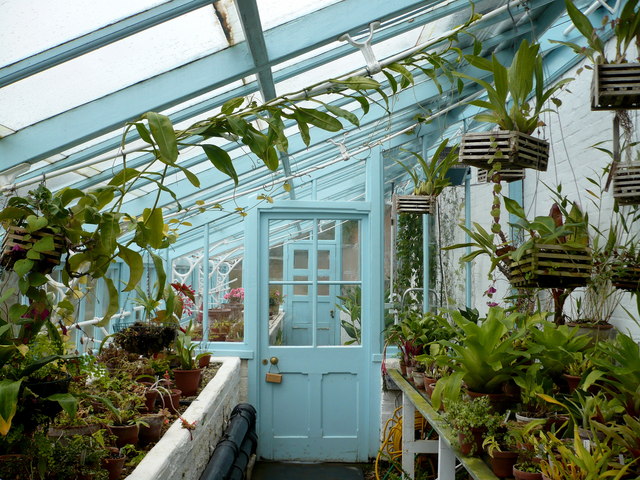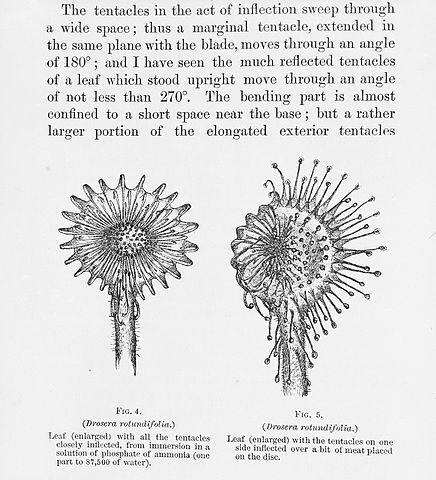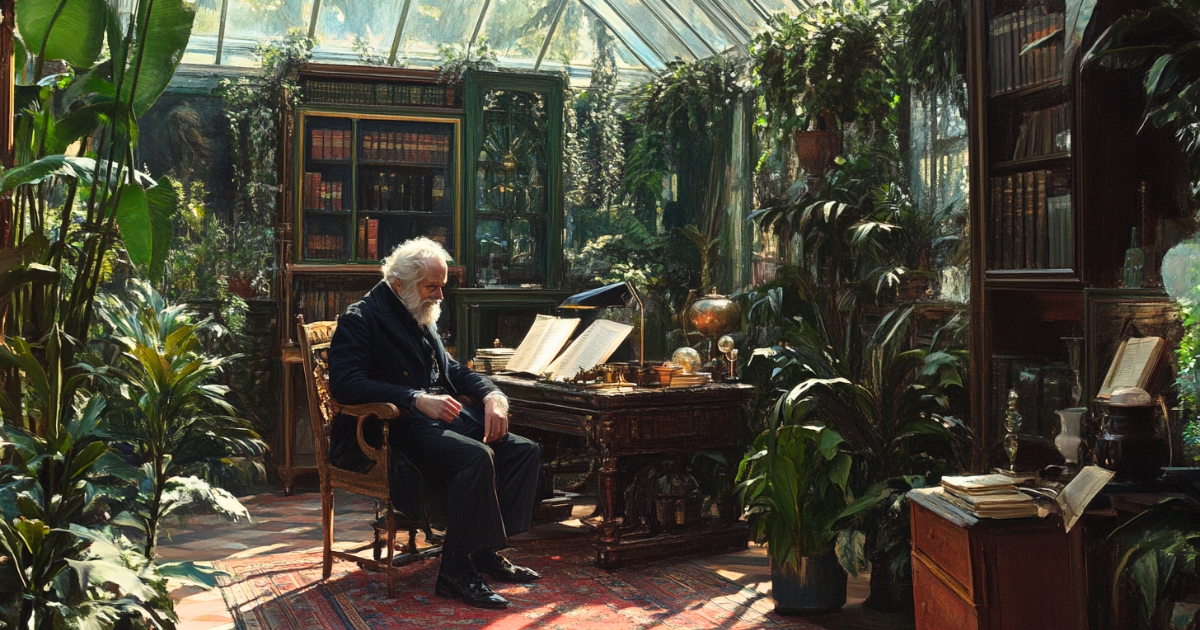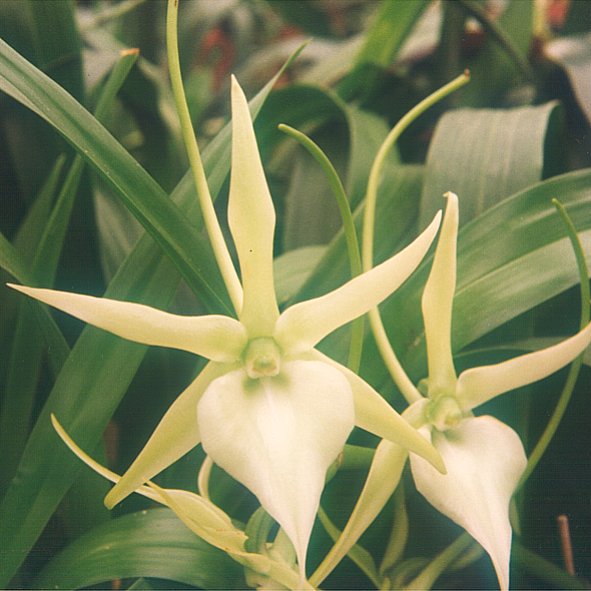In the mid-19th century, at Down House in the London suburbs, a white-haired man was intently observing plants in a small greenhouse in the garden. This man was Charles Darwin. He was examining a beautiful Cattleya orchid with the care one might give to a living jewel, observing its complex structure.
“Remarkable,” Darwin muttered. “The structure of this flower seems as if it were designed for a specific insect.”
At that moment, a significant piece of the puzzle of biological evolution fell into place in Darwin’s mind.
Charles Darwin—when many hear this name, they picture the “father of evolution theory.” However, Darwin’s scientific achievements weren’t limited to research on animal evolution. In fact, his profound studies in botany were crucial in laying the foundation for the theory of evolution.
This article focuses on the plant experiments Darwin conducted in the greenhouse at his home, exploring how these studies contributed to the development of evolutionary theory. We’ll uncover how his meticulous observations and innovative experimental methods supported the theory of natural selection and continue to influence modern plant physiology.

The modern view of Darwin’s greenhouse at Down House, where he conducted plant experiments. Here, he made crucial observations supporting evolutionary theory for decades. By pam fray, CC BY-SA 2.0, Link
Darwin’s Greenhouse and Its Background
In 1842, Darwin moved to Down House in the London suburbs with his wife Emma. However, the greenhouse that would become his “laboratory of thought” wasn’t installed until the 1850s, coinciding with the period when Darwin began to seriously pursue his research on evolution theory.

Portrait of Charles Darwin taken by Julia Margaret Cameron in 1868. At this time, Darwin was deeply immersed in plant research. By Julia Margaret Cameron
The greenhouse installed on the grounds of Down House wasn’t large, but it became an indispensable place for Darwin’s plant research. Here, he cultivated, observed, and experimented with various plant species over several decades.
Inside the greenhouse, plants from various climate zones around the world, from tropical to arctic, were grown. Through these plants, Darwin studied in detail the processes of biological adaptation and variation. He focused on various aspects such as plant growth, movement, and reproduction, meticulously observing how each characteristic adapted to the environment.
Notably, Darwin actively used not only the greenhouse but also his home garden as an experimental space. Various native and exotic species were planted in the garden, functioning as a natural laboratory.
Particularly noteworthy was Darwin’s research on carnivorous plants. He observed in detail how plants like Venus flytraps and sundews capture and digest insects. This research became an important example demonstrating how plants evolve special abilities to adapt to their environment.
The Impact of Plant Research on Evolution Theory
Darwin’s plant research had a decisive influence on the formation of his evolution theory. The following observations and experiments played particularly important roles:
- Plant Movement: Darwin observed in detail the phenomenon of plant parts like tendrils and root tips bending in response to light or gravity (tropism). Tropism refers to the property of plants to grow in a specific direction in response to external stimuli. This research demonstrated that plants have the ability to adapt to their environment, providing evidence of biological plasticity and adaptability.
- Flower Structure and Pollination: Darwin studied the structures of various flowers and elucidated the mechanism of insect pollination. In particular, he showed that the complex flower structure of orchids evolved to attract specific insects, proposing the concept of coevolution. Coevolution refers to the phenomenon where different species evolve while mutually influencing each other.
Angraecum sesquipedale, the Madagascar orchid studied by Darwin. The long spur of this flower became evidence of coevolution with a specific moth. By www.larsen-twins.dk, Attribution, Link
- Seed Dispersal: He researched how various plant seeds disperse, demonstrating that plants have the ability to adapt to new environments and expand their distribution.
- Variation and Inheritance: Through the breeding of cultivated plants, Darwin observed the process of characteristics being passed from parents to offspring. This helped form the concept of inheritance, which became the basis for his theory of natural selection.
Through these observations and experiments, Darwin came to understand the process of evolution, where organisms adapt to their environment and gradually change over generations. His plant research provided concrete evidence for the theory of natural selection proposed in “On the Origin of Species,” strengthening the scientific foundation of evolution theory.
The results of Darwin’s plant research are reflected in his books. In particular, “The Power of Movement in Plants” (1880) and “The Different Forms of Flowers on Plants of the Same Species” (1877) can be considered the culmination of his botanical research. These books had a significant impact on the scientific community of the time and laid the foundation for modern plant science.
Reception in the Contemporary Scientific Community
Darwin’s plant research had a profound impact on the scientific community of his time. However, its reception varied among scientists.
Many botanists were impressed by Darwin’s meticulous observations and innovative experimental methods. In particular, his research on carnivorous plants showed that plants were far more complex and adaptable organisms than previously thought, attracting the interest of many scientists.

Illustration of the sundew (Drosera rotundifolia) from Darwin’s book ‘Insectivorous Plants’ (1875). Darwin’s meticulous observations and descriptions had a significant impact on the scientific community of the time.
On the other hand, there were mixed reactions to Darwin’s evolutionary interpretations. In particular, some scientists with religious backgrounds resisted the idea that complex biological structures and adaptations were produced by natural selection.
However, as time passed, the importance of Darwin’s plant research became widely recognized. His research methods and discoveries promoted the development of plant physiology as a new field and had a significant impact on biology as a whole.
In particular, Darwin’s concept of coevolution became a fundamental principle in ecology and forms the basis of modern biodiversity research. Additionally, his research on plant movement led to the discovery of plant hormones, contributing to the development of modern agricultural techniques.
Darwin’s plant research greatly contributed to expanding support for evolution theory. His detailed observations and experimental results provided powerful evidence demonstrating the process of evolution, convincing many scientists.
Influence on Modern Plant Physiology
Darwin’s plant research continues to have a significant impact on modern plant physiology, more than 150 years after his time.
- Plant Hormone Research: Darwin’s research on plant movement provided the impetus for inferring the existence of plant hormones. In particular, his research on tropism led to the later discovery of auxin by other scientists. While Darwin himself didn’t discover auxin, he suggested its existence.
- Biological Clock Research: Darwin observed that the leaves of some plants move in accordance with the day-night cycle. This discovery became a precursor to modern biological clock research, contributing to our understanding of plant photoperiodism and circadian rhythms.
- Plant Sensory and Response: Darwin’s research on carnivorous plants showed that plants respond surprisingly sensitively to environmental stimuli. This research has led to studies on plant sensory systems and signal transduction in modern botany.
- Ecology and Symbiotic Relationships: Darwin’s research on the coevolution of flowers and insects forms the basis for studies on symbiotic relationships in modern ecology.
- Evolutionary Developmental Biology: Darwin’s comparative morphological approach forms the basis of modern evolutionary developmental biology (evo-devo).
- Plant Adaptation and Climate Change: Darwin’s research on plant adaptation influences studies on plant adaptability under current climate change conditions.
Darwin’s discoveries are now being understood more deeply through modern molecular biological methods. For example, the mechanisms of plant movement and sensation that he observed are now being elucidated at the genetic level.
Moreover, Darwin’s experimental methods themselves continue to influence modern scientists. His meticulous observation, hypothesis setting, and experimental verification approach serves as a model for modern plant science research.
Conclusion
Charles Darwin’s plant experiments not only laid an important foundation for evolution theory but also opened the door to plant physiology as a new scientific field. His painstaking observations and innovative experiments in the greenhouse provided essential insights into understanding the processes of biological adaptation and evolution.
What Darwin’s plant research demonstrated was the remarkable diversity and adaptability of life. He revealed that plants, which appear static at first glance, actually respond surprisingly sensitively to their environment and change gradually over generations. This discovery became a key to understanding the evolutionary process of the entire biological world.
Furthermore, Darwin’s research methods became a model for scientific inquiry. His meticulous observations, bold hypotheses, and patient experiments continue to influence modern scientists.
The legacy of Darwin’s plant research lives on in various fields such as modern plant science, ecology, and agriculture.



